Building an on-demand delivery app
- Go to the Jotform Apps website
- Click the orange Get Started Now button
- Select Use Template
- In the Search in all templates field, type “food delivery
- Click the Food Delivery App template
- Click the green Use Template button
- Make adjustments
- Click Publish
While remote work didn’t suddenly begin in 2020, it definitely skyrocketed that year — forcing most nonessential businesses to allow their employees to work offsite so they wouldn’t expose each other to COVID-19. Thankfully, owners of essential small businesses, such as restaurants and catering companies, could continue to do business in the midst of the pandemic.
Still, many of these restaurants wouldn’t have been able to serve their customers, who were working from home or caring for family members, without on-demand food delivery apps.
In fact, though they existed before the pandemic, the most popular food delivery apps in the U.S. — DoorDash, Grubhub, Uber Eats, and Postmates — experienced a combined $3 billion boost in revenue in the second and third quarters of 2020.
Given the popularity of these apps, many local business owners are still leveraging them to increase their business. Some are even wondering if they can build on-demand delivery apps of their own.
What is an on-demand delivery app?
An on-demand delivery app is exactly what its name signifies — an app (most of which are primarily run by third-party companies) that allows customers to choose when and where they’d like to have products delivered.
If someone’s hungry for pizza, they just choose their toppings, add some cheesy breadsticks on the side, and type in their delivery address to complete their order. And if someone doesn’t feel like going to the supermarket, they can shop for groceries online — from produce to toiletries — and select a delivery window that works for them.
If you make any kind of product that can reasonably be delivered, chances are a third-party service can deliver it for you.
How do on-demand delivery apps work?
Unless restaurant owners build their own on-demand delivery apps, they have to use a third-party app. Let’s imagine a scenario using the most popular types of on-demand delivery apps working in the food industry to explain how the order and delivery process typically works:
- The customer orders food by logging onto a third-party delivery service app. They find a menu on the app — as well as prices — but the level of customization and detail is typically at the discretion of the restaurant owner. (Owners can, for example, list all ingredients and give the customer an opportunity to remove or add items to their meal or allow customers to instead leave a comment for the kitchen staff.)
- Once the customer confirms the food order, the app sends the order to the restaurant through an online portal shared between the restaurant and the third-party app or directly to a point-of-sale (POS) system.
- Finally, local delivery drivers who work for the third-party platform are dispatched to the restaurant to pick up and deliver the customer’s food.
What are the pros of on-demand delivery apps?
In addition to safety and convenience, on-demand delivery apps — especially those for food deliveries — provide ease of use, tracking updates, quick cancellations, and a variety of payment and tipping options for customers.
But they yield many benefits for businesses, too, which is why so many were quick to jump on the delivery app bandwagon. Whether you run a catering company, a small pizza joint, or an entire chain of restaurants, on-demand food delivery apps (whether they’re third-party apps or your own) help you do the following:
- Boost brand awareness: Simply being on a third party’s app strengthens your online presence and broadens your social reach. On the other hand, deciding to build on-demand delivery apps of your own ups your cool factor — especially when you pair your app with a professional, easy-to-navigate website and polished social media presence.
- Retain customers: No matter how good or affordable your food is, most people will choose more convenient restaurants — i.e., those that allow them to order from food delivery apps. What’s more, since 56 percent of customers expect personalized offers, on-demand food delivery apps help by greeting customers and saving their food preferences and payment methods. (That’s how you can more quickly become someone’s go-to restaurant.)
- Use in-house personnel elsewhere: By automating so many aspects of food delivery — from taking orders and honoring special requests to processing payments — your staff is free to complete other in-house tasks. Hosts, servers, and managers can help pack to-go orders, answer phones, greet guests, and even deliver the food in some cases, which will greatly reduce your labor and hiring costs.
- Reduce order mistakes: Order mistakes are not only a nuisance to fix, but they’re also costly. You waste product when you have to remake food, and, worse yet, you can feel pressured to comp the meal outright depending on how long it’ll take to fix and how upset the customer is about the delay. With on-demand food delivery apps, though, the burden of getting things right falls to the customer. When they place an order, they’re more likely to clearly dictate their preferences and food modifications — e.g., dressing on the side or no onions on the burger — since they can see most, if not all, of the components included in a dish. And they’ll most likely check that they input their order correctly on the app.
- Make data-driven improvements: You can greatly improve your business by analyzing the data you receive from orders on delivery apps, including which items are most and least popular and most and least modified, what days and times your takeout rushes occur, and even which payment methods customers prefer. Based on your app users’ likes, dislikes, and preferences, you can change up your specials, pricing, marketing strategies, discounts, vendors, and even everyday processes, resulting in a more streamlined and profitable operation.
What are the cons of on-demand delivery apps?
While on-demand food delivery apps tout many benefits, they have their cons too. For one thing, food quality and presentation almost always take a hit during delivery. Other app-specific issues include
- Less control: If you use a third party, they’re in charge of the delivery process and payment, which reduces how much of the process you handle — from customer questions and concerns to payment disputes and what time orders are placed. For example, you could get a takeout order at the same time as a complicated in-house order, greatly delaying the app’s quoted delivery times.
- High commissions: Third-party platforms take a cut of each of your orders. How much depends on your contract with them and the size and volume of your establishment, but it commonly ranges from 6 to 30 percent. If that’s too steep for you, partnering with a third-party on-demand delivery app may not be worth it. What’s more, credit card payments with third-party apps often take longer to process than in-house payments. The customer pays them (through the app) and then, in about a week or so, you’ll receive your money after they’ve taken their commission.
- Lack of personal touch: While most people appreciate the convenience of ordering through an app, some restaurant owners and catering managers can miss the opportunity to connect with and “wow” new and existing customers. Plus, if an issue arises, sometimes a face-to-face interaction and simple apology can make all the difference between retaining and losing a customer.
- Customer service issues: Though third-party platforms take tedious food delivery tasks off your plate — including the time it takes to input an order, procure payment, and safely deliver it — you don’t have a say in how any of those tasks are handled before delivery drivers arrive at your restaurant for pickup or after they leave. The customer service reps and delivery drivers work specifically for the app, not for you or any of the other hundreds of restaurants featured on the app. While some customers are aware of how delivery apps work, not all of them are, so you could lose a few customers if they have a bad experience and don’t realize you and the delivery service are separate entities.
How much do on-demand food delivery apps cost?
Of course, likely the biggest con of on-demand food delivery apps is the cost of placing your restaurant on one of the four most popular third-party apps. But since you may not have the resources to deliver food without these apps — including access to a large pool of drivers and greater brand visibility and reach — sometimes you have to pay to play.
How much? To get an idea, let’s compare prices on the two most commonly used third-party apps: DoorDash and Uber Eats.
DoorDash offers three different plans — Basic (which comes with a 15 percent delivery commission and 6 percent pickup commission on all orders), Plus (25 percent delivery commission, 6 percent pickup commission), and Premier (30 percent delivery commission, 6 percent pickup commission).
All plans include credit card processing. Opting for higher-priced plans, however, is how you gain access to high-value customers and a larger delivery area.
While Uber Eats offers the exact same pricing model as DoorDash for all three of its plans — Lite, Plus, and Premium — the plan differences are all about visibility.
Lite lets you reach only customers you know (i.e., those who can search for you by name on the app); Plus allows your restaurant to appear in both the Uber Eats home screen and search bar; and Premium will place your restaurant higher in both the home screen and search bar listings.
How can you build an on-demand delivery app with Jotform?
Though third-party platforms can be especially helpful for taking tasks off your plate, assisting with labor shortages (offering a delivery service is impossible if no one can deliver the food) and safely processing payments, they can also be expensive and lack the personal touch your loyal customers have come to expect and appreciate.
Fortunately, there’s a solution: You can build an on-demand delivery app. If you choose Jotform Apps for this task, you’ll give your customers the same contactless convenience of popular third-party on-demand food delivery apps without forking over as much of your profits.
Jotform Apps is intuitive, easy to use, fully customizable, and completely code free, allowing even the most inexperienced users to build an impressive, powerful app they can be proud of.
Here’s how to build on-demand delivery apps with Jotform:
- Go to the Jotform Apps website.
- Click the orange Get Started Now button.
- You should see four options: Start From Scratch, Use Template, Clone Existing App, and Build Store, the last of which is a feature that enables you to collect orders and payments through your online store. Select Use Template. (While you can start from scratch and build on-demand delivery apps from the ground up, we’ll use one of Jotform’s food delivery templates for the remainder of this how-to.)
- In the Search in all templates field, type “food delivery.” (Similar food delivery app templates include the Catering App, Order Ahead App, and Burger Restaurant App.)
- Click the Food Delivery App template.
- Click the green Use Template button.
- Now that you’re in the App Builder, you can make adjustments using Jotform’s user-friendly, drag-and-drop functionality. Add to your menu, include fields for customers to provide their delivery address and payment information, run promotional campaigns, and gather customer feedback.
- Click the paint roller icon on the right (the app designer) to change your app’s colors, fonts, background image, or overall layout.
- Click the green credit card icon on the right to access Store Properties, where you can enable express checkout, select which type of customer information you’d like to collect (name, email address, phone number, etc.), and the currency type you’d like to use as your default.
- Click the Add Element button on the left to add elements to your app, like extra forms, images, fun widgets, or social media icons.
- Once you’ve customized your app to your liking, simply click Publish at the top of the screen to share it with your customers via link, email, downloadable quick response (QR) code, or embeddable code for your website. You’ll receive an alert once someone has placed an order, and that will help you get it to them right away.
The on-demand food delivery app industry is here to stay, especially as the cost of convenience seemingly outweighs all else (including hefty delivery fees) for many consumers around the country. Taking the time to build an on-demand delivery app with Jotform Apps gives you a competitive edge over other restaurants in your area, and it saves you time and broadens your reach.
Photo by Kai Pilger on Unsplash






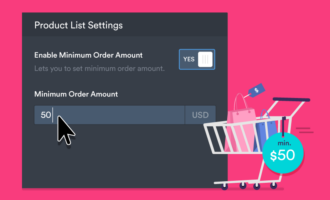


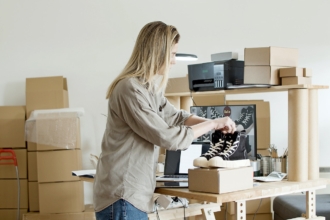

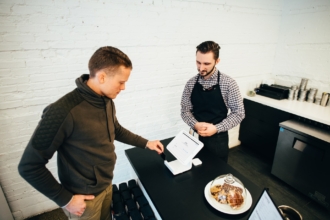

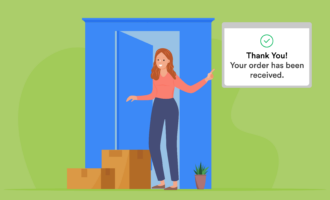





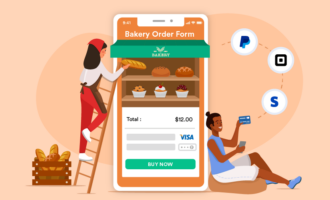
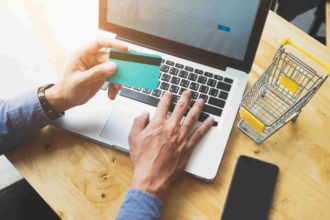
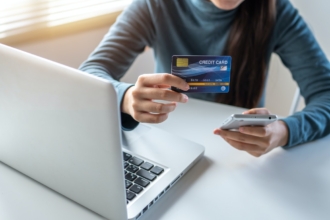


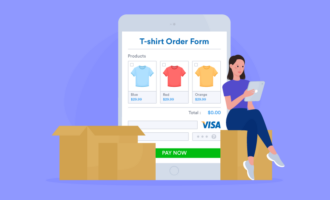


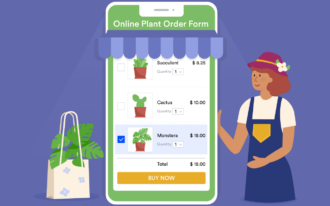
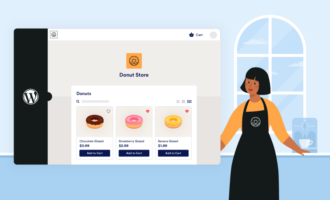

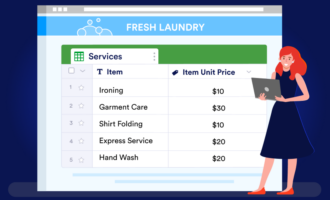


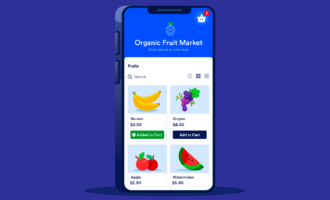



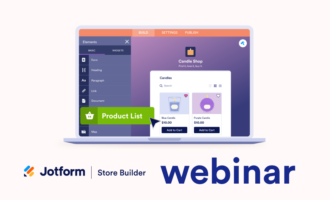
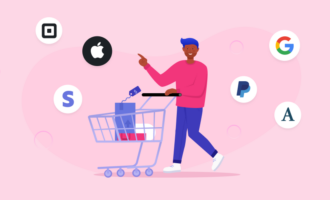

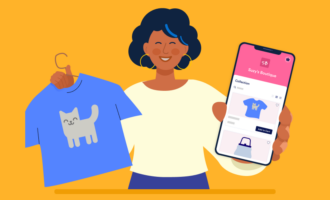





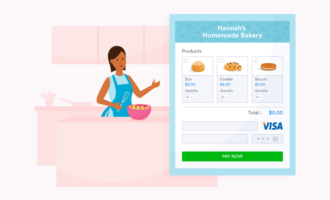
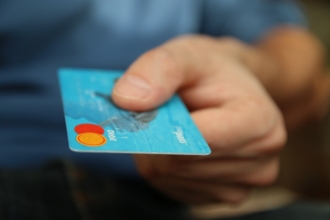
Send Comment: